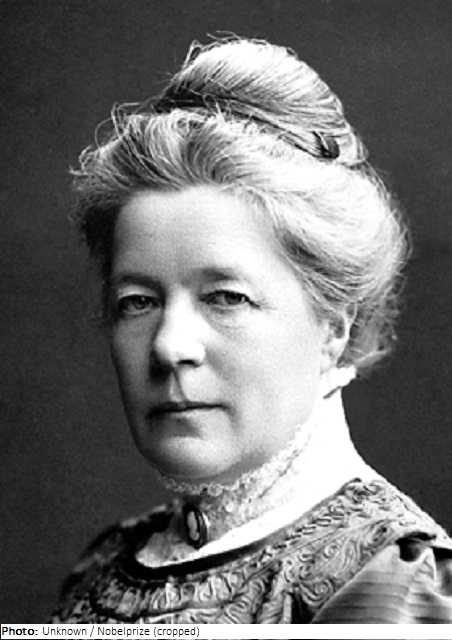Selma Lagerlöf

Biographical information
| Roles | Referee |
|---|---|
| Sex | Female |
| Full name | Selma Ottilia Lovisa•Lagerlöf |
| Used name | Selma•Lagerlöf |
| Born | 20 November 1858 in Sunne, Värmland (SWE) |
| Died | 16 March 1940 in Sunne, Värmland (SWE) |
| NOC |  Sweden Sweden |
Biography
Selma Lagerlöf was a Swedish poet and the main representative of Swedish New Romanticism. She grew up on the Mårbacka estate in the Värmland province. Born with a hip complaint, she preferred reading books instead of running around with other children. Early on, she had the desire to become a writer and was especially interested in the sagas and stories of her homeland.
However, Lagerlöf was first trained as a teacher and began working in a boarding school for girls in Landskrona in 1885. Concomitantly, she wrote poems, and in 1890 she won first prize in a short story competition with parts of her later published first book, Gösta Berling’s Saga. Thanks to the support of a baroness, she was released from her teaching duties for one year and was able to devote herself entirely to writing.
Gösta Berling’s Saga (1891), projected motifs from her native Värmland and her fate into the past. It has become one of the classics of Swedish literature. After her second book, Invisible Links, Lagerlöf gave up teaching in 1895 to become Sweden’s first woman who could make a living from writing. Further works show a synthesis of the mystical and magical realism, the belief in the power of good and the knowledge of the existential endangerment of man, being at the mercy of nature and landscape.
Lagerlöf traveled extensively throughout Europe before writing her most famous work in 1906, The Wonderful Adventures of Nils, one of the most popular children’s books of all time. Here, the new Swedish orthography was also used for the first time. Lagerlöf published numerous works, including novels, novellas, and stories. With almost everything being successful, she became the world’s first bestselling author. In 1909, she was the first woman to receive the Nobel Prize for Literature. Five years later, she became the first female member of the Swedish Academy and, thus, of the Nobel Prize Committee.
In 1908, Lagerlöf bought back the Mårbacka estate, which her family had had to give up. with the Nobel Prize money. There, she farmed, produced oatmeal, and lived there permanently from 1923. For many years, she lived together with two women at the same time, writer Sophie Elkan (1853-1921) and teacher Valborg Olander (1861-1943), an extraordinary constellation of love at the beginning of the 20th century.
Lagerlöf was a modern and cosmopolitan woman. An icon of Swedish national culture, she supported the poor and oppressed and fought for women’s rights. In 1933, the staunch pacifist got involved in a committee to rescue Jewish refugees from Germany including poet Nelly Sachs (1891-1970).
Referee
| Games | Sport (Discipline) / Event | NOC / Team | Phase | Unit | Role | As | |
|---|---|---|---|---|---|---|---|
| 1924 Summer Olympics | Art Competitions |  SWE SWE |
Selma Lagerlöf | ||||
| Literature, Open (Olympic) | Final Standings | Judge |